Description
Frozen Pork Leg: A Complete Guide for Consumers, Chefs, and Food Businesses
When it comes to versatile and flavorful cuts of meat, pork leg has always held a special place in culinary traditions across the globe. Whether roasted, braised, or slow-cooked, the leg of pork provides tender meat, rich flavor, and endless cooking possibilities. Today, with advancements in cold-chain logistics and food preservation, https://copacolc.com/frozen pork leg has become an increasingly popular choice among households, restaurants, and wholesale buyers.
This comprehensive guide explores everything you need to know about frozen pork leg—including its nutritional value, storage, cooking tips, buying guide, and market insights.
What Is Frozen Pork Leg?
The is the hind leg portion of the pig, known for its lean yet flavorful meat. It is commonly used to prepare ham, roasts, pulled pork, and traditional dishes in many cultures.
When processed for freezing, pork leg is carefully trimmed, chilled, vacuum-sealed, and frozen at controlled temperatures to preserve freshness, flavor, and safety. The freezing process allows the meat to be stored for longer periods without compromising nutritional quality.
Benefits
-
Extended Shelf Life
Fresh pork typically lasts only 3–5 days in the refrigerator. , however, can last up to 6–12 months when stored correctly. -
Nutrient Preservation
Modern flash-freezing techniques lock in vitamins, minerals, and protein, ensuring that retains most of its nutritional value. -
Convenience & Availability
Unlike fresh pork, which can be seasonal or region-specific, frozen pork leg is available year-round in supermarkets and online stores. -
Reduced Food Waste
Buying frozen pork leg in bulk helps reduce food waste since you can thaw only the amount you need. -
Cost-Effectiveness
Frozen pork legs are often more affordable compared to fresh cuts, making them popular with households and food service businesses.
Nutritional Value of Pork Leg
Pork leg is a rich source of protein, vitamins, and minerals. Below is an approximate nutritional profile per 100 grams of cooked pork leg:
-
Calories: 242 kcal
-
Protein: 27 g
-
Fat: 14 g
-
Carbohydrates: 0 g
-
Vitamin B12: 0.7 mcg (29% DV)
-
Niacin (B3): 9 mg (55% DV)
-
Iron: 1.1 mg (6% DV)
-
Zinc: 2.4 mg (22% DV)
-
Selenium: 36 mcg (65% DV)
This makes pork leg a great choice for muscle growth, immune support, and overall energy.
How to Properly Store
Correct storage is essential to maintain taste and safety:
-
Temperature Control
Store at -18°C (0°F) or lower to prevent bacterial growth. -
Vacuum Packaging
Always keep the pork leg in its original vacuum-sealed packaging to prevent freezer burn. -
Freezer Placement
Place pork leg in the coldest part of the freezer, away from frequently opened sections. -
Storage Duration
-
Whole frozen pork leg: up to 12 months
-
Cut portions: 6–8 months
-
Ground pork leg: 3–4 months
-
Thawing Frozen Pork Leg Safely
Improper thawing can lead to bacterial growth. The safest thawing methods include:
-
Refrigerator Thawing (24–48 hours): Place the in a tray inside the fridge. This keeps it at a safe temperature.
-
Cold Water Thawing (6–12 hours): Submerge the sealed package in cold water, changing the water every 30 minutes.
-
Microwave Thawing (Quick Option): Use the defrost setting, but cook immediately after thawing.
⚠️ Avoid leaving pork at room temperature for thawing—this can cause bacterial contamination.
Cooking Frozen Pork Leg
Frozen pork leg can be cooked directly without thawing, but results are usually better when thawed first. Popular cooking methods include:
1. Roasting
-
Preheat oven to 180°C (350°F).
-
Rub pork leg with olive oil, salt, pepper, garlic, and herbs.
-
Roast uncovered for 3–4 hours (depending on size).
-
Rest for 15 minutes before carving.
2. Slow Cooking
-
Place thawed pork leg in a slow cooker with onions, carrots, and stock.
-
Cook on low for 8–10 hours until tender.
-
Perfect for pulled pork sandwiches.
3. Braising
-
Sear pork leg in a hot pan until browned.
-
Add broth, wine, and vegetables.
-
Simmer covered for 2–3 hours until fork-tender.
4. Smoking
-
Ideal for BBQ lovers.
-
Smoke pork leg at 110–120°C (225–250°F) for 6–10 hours.
-
Creates tender meat with a smoky flavor.
Traditional Dishes Made with Pork Leg
Different cuisines use pork leg in unique and flavorful ways:
-
German Schweinshaxe – Roasted pork knuckle with crispy skin.
-
Chinese Braised – Soy sauce, ginger, and spices create a rich, savory dish.
-
Philippine Crispy Pata – Deep-fried pork leg served with vinegar sauce.
-
Spanish Jamón – Cured pork leg aged for months to create premium ham.
-
Italian Porchetta – Herb-stuffed roasted pork leg with crispy crackling.
Buying Guide: How to Choose Quality Frozen Pork Leg
-
Trusted Source – Buy from reputable butchers, supermarkets, or online meat suppliers.
-
Packaging Integrity – Ensure vacuum seals are intact with no ice crystals or freezer burn.
-
Meat Color – Pork leg should appear pinkish-red, not pale or gray.
-
Label Information – Check for origin, processing date, and best-before date.
-
Certification – Look for food safety certifications (HACCP, ISO, USDA, EU standards).
Frozen Pork Leg for Businesses and Restaurants
Restaurants, caterers, and food manufacturers rely heavily on frozen pork legs because of:
-
Consistent Supply: Year-round availability for menu stability.
-
Bulk Pricing: Cost savings when purchasing in large quantities.
-
Versatility: Can be used in a wide range of dishes, from BBQ to fine dining.
-
Export Opportunities: is a major product in the international meat trade, particularly between Europe and Asia.
Common Myths About Frozen Pork Leg
-
“Frozen pork is less nutritious than fresh.”
False—freezing preserves nutrients almost completely. -
“Freezing changes the taste.”
Properly frozen pork leg tastes nearly identical to fresh when cooked correctly. -
“Frozen meat is unsafe.”
Safe storage and thawing practices make frozen pork leg just as safe as fresh meat. -
“It’s only good for industrial use.”
Frozen pork leg is equally suitable for home kitchens, not just food businesses.
Sustainability
Freezing meat contributes to sustainability by:
-
Reducing food waste
-
Allowing global distribution without spoilage
-
Supporting farmers by stabilizing demand
Additionally, many suppliers now adopt sustainable farming and processing practices, making frozen pork leg an eco-conscious choice for consumers.
Tips for Maximizing Flavor
-
Marinate Overnight: Enhances tenderness and flavor.
-
Score the Skin: Helps render fat for crispier crackling.
-
Use Aromatics: Garlic, rosemary, thyme, and bay leaves pair well with pork.
-
Rest Before Slicing: Prevents juices from escaping.
Q1: Can I refreeze pork leg after thawing?
A: It’s not recommended unless the meat was thawed in the refrigerator and hasn’t reached room temperature.
Q2: Is frozen pork leg suitable for BBQ?
A: Yes, it’s excellent for smoking and grilling.
Q3: Does freezing kill bacteria?
A: Freezing halts bacterial growth but doesn’t kill all bacteria—proper cooking is necessary.
Q4: What size options are available?
A: Pork legs are sold whole (5–10 kg) or in smaller portions (1–3 kg).
Q5: Is pork leg the same as ham?
A: Ham is usually made from cured or smoked pork leg, while fresh is uncured.
Final Thoughts
Frozen pork leg is a practical, nutritious, and versatile option for both home cooks and food businesses. It offers the convenience of long shelf life, year-round availability, and affordability without sacrificing taste or nutrition. From hearty family roasts to gourmet cured hams, pork leg proves itself as one of the most adaptable cuts in the world of meat.
Whether you’re buying it for your household or sourcing it for a restaurant, https://en.wikipedia.org/wiki/Meat_chopfrozen pork leg ensures you can always bring flavorful, protein-rich meals to the table.

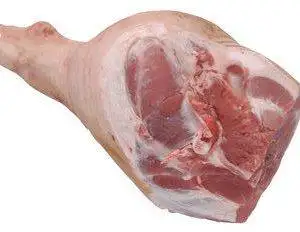
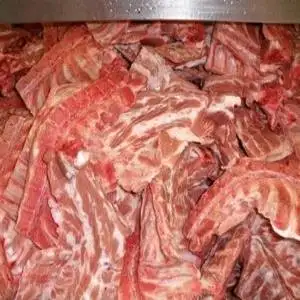
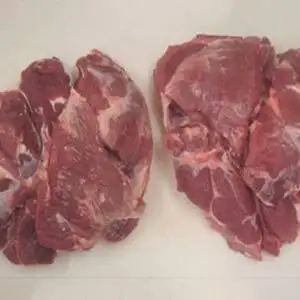
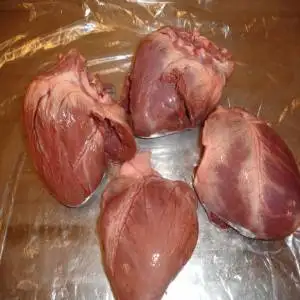
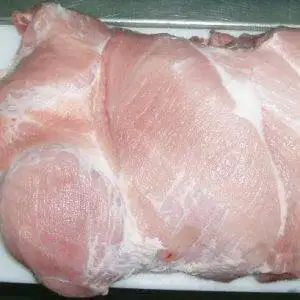
Reviews
There are no reviews yet.